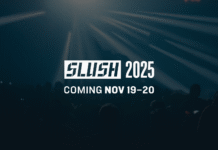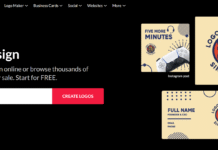Marketers chase engagement, but audiences crave meaning and momentum. That is why social media gamification has moved from novelty to operating system for modern campaigns. When you apply game design to your channels, you package participation into small actions that earn feedback, status, or progress. You replace passive scrolling with active loops. Done responsibly, social media gamification deepens attention, increases sharing, and turns sporadic interactions into habits. The goal is not to manipulate; the goal is to offer clear goals, fair rules, and rewards that align with your brand’s promise.
Across platforms, social media gamification works because it speaks to universal motivations. People want competence, connection, and autonomy. Points and levels signal growing skill, challenges create shared effort, and choice preserves agency. These mechanics can power loyalty programs, advocacy drives, or education series. In practice, the craft is less about flashy prizes and more about structuring small wins that compound. A weekly streak, a visible progress bar, or a season of missions can outperform a single big giveaway. The cadence teaches your audience what to expect and how to succeed.
The core loop of social media gamification is simple. You set a clear trigger, invite an action, deliver an immediate reward, and capture a small investment that makes the next action more likely. For example, a creator launches a seven day content quest. The trigger is a morning post, the action is a short reply with a hashtag, the reward is a daily leaderboard update, and the investment is saving a template for tomorrow. Each day builds confidence and community. Over time, the loop becomes a habit supported by recognition and narrative.
Design quality matters. If mechanics feel extractive, users burn out. If rules are vague, users disengage. Ethical social media gamification respects attention and privacy. It limits variable rewards, avoids dark patterns, and makes opt outs easy. It also aligns with real business outcomes. A challenge can educate buyers, a quest can onboard new users, and a badge can signal verified expertise. The best programs map each mechanic to a behavior that creates value for both the participant and the brand.
Operationally, social media gamification benefits from simple stacks, clear metrics, and steady storytelling. Most platforms already offer polls, quizzes, stickers, and analytics. Third party tools add referrals, points, and redemptions when needed. What differentiates durable programs is not technology but the weekly rhythm of planning, shipping, and learning. Start small, ship consistently, measure the right signals, and adjust difficulty to sustain flow. For strategic context and market context, explore industry insights at insights. The sections that follow present a complete playbook to plan, build, and measure social media gamification for 2025 and beyond.
1) The Psychology Behind Social Media Gamification
Motivation models and why users play
Social media gamification taps intrinsic drivers first and supplements them with extrinsic rewards. Autonomy lets participants choose paths, competence grows through levels, and relatedness emerges in teams or comment threads. Extrinsic elements such as points or coupons should acknowledge effort without eclipsing meaning. When mechanics honor personal progress and community recognition, social media gamification sustains interest beyond the prize window. Map each action to a clear purpose so users understand how play advances their goals, not just yours.
Core game loops in a marketing context
A loop frames the smallest repeatable unit of participation. In social media gamification the loop might be watch, respond, collect, and share. Each step needs fast feedback. A reaction emoji, a progress tick, or a shout out in a story reinforces momentum. Layer loops into arcs. Daily loops maintain touch, weekly loops deliver breakthroughs, and seasonal loops create narrative closure. Tie loops to education, onboarding, or advocacy so every cycle compounds product understanding and social proof.
Intrinsic versus extrinsic rewards
Balance the two. Intrinsic rewards include mastery, status inside a community, and meaningful contribution. Extrinsic rewards include discounts, access, or physical goods. In social media gamification use extrinsic rewards as accelerators, not engines. Make them transparent and attainable without encouraging spam. Publish caps, display odds when relevant, and ensure effort maps proportionally to payoff. This preserves trust while keeping participation lively.
Ethical considerations and user well being
Guardrails make programs sustainable. In social media gamification define clear participation windows, set respectful notification frequencies, and provide cool down periods after intense events. Avoid mechanics that pressure users to tag unwilling friends or flood feeds. Offer alternative low pressure paths so different personalities can enjoy the experience. Document your data practices and respect privacy settings. Ethical design is not just compliance; it is a brand advantage that protects long term engagement.
2) Choosing the Right Gamification Mechanics
Points, badges, leaderboards, and levels
These are the building blocks of social media gamification. Points quantify effort, badges commemorate milestones, leaderboards introduce friendly comparison, and levels pace difficulty. Use points for frequent micro actions, badges for meaningful steps, and levels to unlock features or content. Keep leaderboards scoped to cohorts to avoid demoralizing new participants. Rotate seasonal boards so late joiners can compete on a fresh field.
Streaks, progress bars, and milestones
Streaks build routine, progress bars visualize momentum, and milestones provide finish lines. In social media gamification streaks should forgive short lapses to avoid all or nothing drop offs. Progress bars should move with each micro action to reward partial effort. Milestones should be specific and named so they are easy to celebrate. These elements keep attention anchored through clarity and continuous feedback.
Quests, challenges, and missions
Quests string actions into a story. Challenges emphasize time bounded effort. Missions tie activity to a cause or product outcome. In social media gamification use quests to teach skills, challenges to spark bursts of activity, and missions to align community energy with brand values. Publish a start date, end date, eligibility, and judging criteria. Offer solo and team paths to serve different play styles.
Loot, surprise, and variable rewards
Surprise can delight in moderation. Variable rewards include mystery boxes, random drops, or instant win moments. In social media gamification limit randomness to optional side paths and disclose constraints. Weight rewards toward participation rather than chance. When the base experience is satisfying and fair, occasional surprises amplify joy without undermining trust.
3) Audience Research and Segmentation
Define personas and play styles
Segment by motivation and context. Some users chase mastery, others value social recognition, and others prefer exploration. In social media gamification create personas such as Competitor, Collaborator, Collector, and Creator. Interview a small sample and watch platform analytics to identify which segments dominate. Design mechanics that let each persona thrive without forcing a single style.
Map motivations to mechanics
Translate insights into rules. Competitors enjoy ranked leaderboards, collaborators enjoy co op quests, collectors enjoy badges and sets, and creators enjoy prompt driven content. Social media gamification becomes efficient when each mechanic maps to a segment with a clear reason to return. Publish optional tracks and allow switching so users can experiment safely.
Social graphs and community roles
Communities need roles. Define newcomers, regulars, contributors, moderators, and ambassadors. In social media gamification give each role tools that suit its responsibilities. Newcomers receive guided tours, regulars unlock templates, contributors gain publishing powers, and ambassadors receive referral links. Visible roles help newcomers model successful behavior and reduce moderation load.
Accessibility and inclusivity checks
Commit to access by design. In social media gamification caption videos, provide alt text, avoid color only signals, and ensure text contrast. Offer mechanics that do not depend on speed or constant availability. Translate core assets where feasible. Inclusivity expands total addressable community and aligns gamified participation with real world diversity.
4) Goal Setting and Success Metrics
Align mechanics with business outcomes
Start with the outcome. If the goal is education, track quiz completion, not likes. If the goal is advocacy, track posts created by users. In social media gamification define one north star per campaign and three supporting metrics. Tie each mechanic to the north star so effort flows toward measurable value. Remove features that do not move the needle.
North star metrics and supporting KPIs
Choose a north star such as weekly active contributors, challenge completion rate, or qualified leads from user generated content. Supporting KPIs might include average actions per participant, median time to first win, and retention by cohort. Social media gamification rewards teams that instrument these metrics early and review them on a fixed cadence.
Cohort analysis and retention curves
Measure persistence. Segment users by the week they join and compare survival after day 1, week 1, and month 1. In social media gamification healthy curves flatten at a stable baseline as habits form. Investigate sudden drops for friction points. Use soft relaunches and re onboarding to rescue cohorts without disrupting loyal players.
Experiment design and sample sizing
Run structured tests. Define hypotheses, success thresholds, and test windows. In social media gamification avoid multivariate sprawl when sample sizes are small. Prioritize changes that improve first week wins, since early success predicts long term participation. Document results in a shared repository so learning compounds across campaigns and teams.
5) Platform by Platform Tactics
Instagram stories, reels, and sticker polls
Instagram offers native tools that fit social media gamification. Sticker polls, quizzes, sliders, and countdowns convert passive viewing into quick actions. Use story arcs that span a week, with progress recaps pinned to highlights. Reels can announce challenges and showcase winners. Keep calls to action short and consistent so participants know exactly how to earn points or badges.
TikTok trends, duets, and challenge design
TikTok favors creation and remix. In social media gamification design challenges that invite variations with simple rules. Use a branded sound, a short script, or a gesture pattern. Feature duets to recognize participants quickly and to model quality. Provide templates in the caption and display progress montages to maintain momentum through the campaign window.
YouTube community, shorts, and live chat
YouTube supports longer arcs. In social media gamification combine weekly shorts that introduce missions with community posts that track leaderboards. Use live chat during streams for lightning rounds, quizzes, or surprise unlocks. Archive replays with timestamps so late joiners can catch up. Reward consistent commenters with visible roles and exclusive polls.
X and LinkedIn prompts, polls, and threads
Text led platforms reward clarity and cadence. In social media gamification publish prompt threads that award points for thoughtful replies, not volume. Use weekly polls as checkpoints and quote retweets to recognize top entries. On LinkedIn, tag contributors in roundups and offer skill badges that link to learning resources. Keep mechanics professional and outcome focused to match the audience context.
6) Contests, Giveaways, and Legal Compliance
Entry methods and friction management
Contests work when participation is simple and outcomes are fair. In social media gamification, define one clear entry action and one optional bonus action. Typical flows include comment with a prompt, submit a short user generated clip, or answer a quiz. Limit mandatory tags and do not require reposts that create spam. Use a pinned post that explains how to enter, what counts as a valid submission, and how many entries each person can make. This clarity prevents disputes and increases completion rates. Treat the contest as an onramp into a longer season of social media gamification rather than a one time spike. After the contest, route entrants into a low pressure streak or a points track so momentum carries forward.
Prize strategy and fulfillment
Prizes should reinforce your value proposition. Discounts can work, but access and recognition often travel further. Offer early previews, private sessions with creators, or limited badges that unlock persistent perks. In social media gamification, publish prize tiers that reward depth of participation, not just luck. Use a fulfillment tracker and send confirmations within two business days. If physical items are involved, state shipping regions and timelines up front. Add a consolation badge for non winners to maintain goodwill and keep them active in your broader social media gamification program.
Regional regulations and platform rules
Every campaign must respect local laws and platform terms. In social media gamification, include an eligibility line, a no purchase clause where required, and a release that clarifies the platform is not a sponsor. Some regions prohibit certain prize types or restrict random drawings. If you allow minors, add explicit parental consent. Archive official rules in a public document and reference them in the post. Keep a record of winners and proofs of selection for at least six months. This diligence protects your brand and preserves trust in your system of social media gamification.
Anti fraud checks and moderation flow
Fraud erodes confidence. Before selecting winners, scan entries for bots, duplicates, and inauthentic engagements. In social media gamification, set simple checks like minimum account age, visible activity, or completion of all steps. Create a moderation playbook that defines disqualifying behavior and escalation paths. Use screenshots to document decisions. When you announce winners, explain the selection method and invite polite challenges within a short window. Transparent handling of disputes strengthens the legitimacy of your ongoing social media gamification cycles.
7) Building Habit Loops
Trigger, action, reward, investment
A habit loop is the backbone of durable programs. In social media gamification, design a repeating sequence that begins with a predictable trigger such as a morning post or a weekly email. Ask for a small action, provide an immediate reward like a progress tick, and capture a small investment such as saving a template. This loop converts curiosity into routine. Keep the first action short so new participants reach their first win in under one minute. Each repetition increases the likelihood that users return to your social media gamification track without prompts.
Weekly cadences and seasonal arcs
Cadence creates rhythm. Ship daily micro prompts, weekly milestones, and quarterly seasons with a clear start and finish. In social media gamification, label weeks by theme and publish a simple calendar so people can plan around work and school. Use mid season checkpoints that allow late joiners to catch up. Close each season with a recap, a hall of fame, and a short survey that feeds the next arc. This structure prevents fatigue while keeping the narrative of your social media gamification fresh.
Streak design without burnout
Streaks are powerful and fragile. In social media gamification, add grace days that forgive occasional lapses and offer wildcard tokens that restore a broken streak once per month. Make streaks optional rather than mandatory for eligibility, since all or nothing systems cause churn after a miss. Display streaks privately first, then allow users to share them if they choose. Pair streak length with modest perks, not escalating pressure. Healthier streaks lead to longer participation in your broader social media gamification efforts.
Re engagement after lapses
People will slip. Plan for it. In social media gamification, trigger gentle re onboarding after seven days of inactivity. Offer a short catch up path with two or three tasks that restore lost progress. Do not flood users with notifications. A single respectful prompt and a visible easy win often suffice. Celebrate returns without shaming absences. When participants feel welcomed back, they are more likely to stick with your long term social media gamification plan.
8) Community Design and Social Proof
Roles, recognition, and status ladders
Communities thrive when roles are clear and recognition is visible. In social media gamification, define newcomer, regular, contributor, moderator, and ambassador. Grant lightweight powers at each level such as posting prompts, curating highlights, or welcoming newcomers. Make promotions based on helpful actions rather than volume. A status ladder that honors service, craft, and kindness creates durable social proof and stabilizes your social media gamification community.
User generated content pipelines
User generated content amplifies reach and reduces production costs. In social media gamification, provide prompt packs and editing templates to lower creative friction. Feature participant work in weekly spotlights and save a highlight reel at the end of each season. Ask permission where required and credit creators prominently. Rotate themes to prevent repetition. A healthy pipeline turns your audience into co authors of your social media gamification story.
Ambassador and referral loops
Ambassadors can accelerate growth when incentives align. In social media gamification, invite high trust contributors to share referral links that award both sides with points or access. Keep rewards modest and capped to reduce abuse. Provide ambassadors with a small toolkit of message templates and FAQs. Track referred participants as a cohort and give ambassadors aggregate stats. Referral loops that reward helpfulness rather than raw volume will reinforce the values of your social media gamification.
Handling conflict and toxicity
Clear rules prevent harm. In social media gamification, publish community guidelines that forbid harassment, spam, and misleading claims. Train moderators to de escalate, document evidence, and act consistently. Build slow mode into high tension threads and allow temporary mutes. When mistakes happen, acknowledge them and explain fixes. Safety is an ongoing practice, and safety preserves the trust that makes social media gamification sustainable.
9) Creative Production and Storytelling
Narrative arcs for challenges
Stories make mechanics meaningful. In social media gamification, frame each challenge as a journey with a beginning, obstacles, and transformation. For example, a seven day creator quest can move from discovery to skill practice to showcase. Give each day a title and a purpose. Close with reflection prompts that ask participants what they learned. A narrative lens elevates routine tasks and increases completion rates across your social media gamification calendar.
Visual systems and motion templates
Visual consistency reduces cognitive load. In social media gamification, build a small design system with colors, typography, and motion presets. Create reusable frames for leaderboards, badges, and recap cards. Keep animations short and accessible, and avoid flashing patterns. A stable visual language signals professionalism and makes your social media gamification assets instantly recognizable in crowded feeds.
Sound and haptic cues where available
Audio and haptics can reinforce progress. In social media gamification, pair short success sounds with milestone posts and use subtle vibrations in app experiences when platforms support them. Keep cues optional and respectful of silent mode. Avoid startling effects or gimmicks. Sensory feedback should enhance clarity, not distract. These cues make small wins feel tangible and improve recall of your social media gamification events.
Brand voice and character consistency
Consistency builds trust. In social media gamification, write prompts in a tone that matches your brand values. Decide whether the narrator is a collective we, a named host, or a rotating cast. Maintain a glossary of verbs for calls to action so instructions stay familiar. When brand voice is steady, participants understand expectations and are more likely to return to your social media gamification challenges week after week.
10) Tools and Tech Stack
Native platform features you can exploit
Start with what you already have. In social media gamification, native tools like polls, quizzes, live reactions, and stickers are fast and free. Use pinned posts to explain rules, highlights to preserve arcs, and saved responses to speed moderation. Combine these features into a repeatable operating routine. Native tools reduce risk and keep your social media gamification adaptable when third party services change.
Third party gamification platforms
When needs grow, consider dedicated platforms that add points, tiers, redemptions, and referral tracking. In social media gamification, choose tools that integrate with your primary channels and your customer database. Prioritize export and audit capabilities, since transparency matters during contests and compliance checks. Avoid lock in by keeping core rules documented outside the tool. The platform should serve your social media gamification, not define it.
No code automations and integrations
Automation keeps teams small and responsive. In social media gamification, connect forms, spreadsheets, and messaging tools to score entries, update leaderboards, and trigger confirmations. Use templates for routine replies and set routing rules for edge cases. Test automations with a sandbox audience before going live. Thoughtful automation removes repetitive work and lets teams focus on creative improvements to social media gamification.
Data collection, privacy, and security
Collect only what you need. In social media gamification, explain what data you capture, why you capture it, and how long you keep it. Use unique IDs for entries rather than storing sensitive details in public spaces. Limit admin access, enable two factor authentication, and back up leaderboards and prize logs. Security and privacy are not just legal concerns. They are pillars of trust that determine whether people keep engaging with your social media gamification over time.
11) Measurement and Analytics
Event tagging and funnel mapping
Measurement is the safety net for social media gamification. Define a clean event taxonomy before launch. Tag view, participate, share, invite, redeem, and complete. Map these events into a simple funnel that shows how many people see a prompt, act on it, and return within seven days. When tags are consistent across platforms, you can compare loops and drop the ones that do not move the needle. Clear mapping turns social media gamification from guesswork into an operating system.
UTM structure across campaigns
Use a strict UTM scheme so traffic from social media gamification is easy to attribute. Standardize source, medium, campaign, content, and term fields. Include the mechanic in the campaign name, such as challenge_week2 or points_tier1. Build templates so creators and partners cannot break conventions. Verify UTMs by clicking test links before each season. A consistent scheme lets you measure which mechanics deliver completions and which ones only inflate vanity metrics.
Attribution for organic interactions
Organic plays can be hard to credit. Build a lightweight model that assigns value to first participation, last participation, and cumulative exposure. For social media gamification, track assisted conversions by counting participants who engaged twice or more before converting. Use landing page views and coupon redemptions as anchors. You do not need a complex model to make good decisions, but you do need a consistent rule set that the team can trust.
Dashboards and reporting cadences
Create one live dashboard for daily execution and one weekly report for decisions. The daily view should show active participants, actions per participant, and time to first win. The weekly report should track cohort retention, content that drove the most completions, and cost per engaged participant when prizes are involved. Make reporting a standing agenda item so social media gamification improves through deliberate practice rather than intuition.
12) Case Studies by Objective
Awareness campaigns that scaled fast
A consumer brand launched a seven day hashtag quest to teach product use cases. The social media gamification loop asked for short clips, awarded points for clarity, and spotlighted two creators per day. Impressions rose quickly, but the key gain was in saves and shares, which predicted continued reach after the season ended. The lesson was simple. Tutorials that make viewers look competent outperform raw hype, and recognition beats large prizes for reliable participation.
Engagement spikes with durable retention
An education app ran a monthly streak with grace days and wildcard tokens. The social media gamification design focused on private progress first and optional public sharing later. Short daily prompts took under one minute to complete. Completion rates stabilized around week two and retention held across three cycles. The takeaway was that forgiving streaks and predictable prompts build habits that survive busy weeks without constant paid boosts.
Lead generation and list growth
A B2B team used social media gamification to turn a webinar series into a five mission path. Each mission taught a skill and ended with a short quiz. Passing three missions unlocked a template pack and a private Q and A session. Leads from the program converted at higher rates than cold signups because the loop created proof of interest and competence. Structured learning paths make social media gamification a strong lead qualifier.
Commerce conversions and average order value
A retailer paired a seasonal challenge with bundle offers. Participants earned points by posting use cases and answering product care quizzes. Points unlocked tiered bundles that nudged customers from single items to curated sets. Social media gamification lifted average order value because rewards matched real usage, not random merchandise. The main insight was to align perks with natural next purchases rather than novelty.
13) Budgeting, Resources, and Ops
Cost models for prizes and production
Plan costs in three buckets. Content production, prize and fulfillment, and tools or staffing. Set a ceiling for total prize value per participant to avoid paying for empty reach. In social media gamification, smaller but more frequent rewards often beat one grand prize. Production costs drop when you reuse templates and rotate themes. A simple budget that forces trade offs will keep the program sustainable quarter after quarter.
Team roles and responsibilities
Assign clear owners. A producer manages the calendar and posts. A community lead runs moderation and recognition. An analyst owns tagging, UTMs, and reporting. A designer maintains the visual system. For social media gamification, define backups for each role so vacations and spikes do not stall the loop. Small teams can cover all roles if the playbook is documented and the cadence is realistic.
Vendor selection and contracting
When you need outside help, choose vendors who can commit to weekly cycles and transparent metrics. In social media gamification, insist on audit access to scoring rules and participant logs. Use short initial contracts with explicit renewal criteria. Tie bonuses to outcomes such as completion rates or repeat participation rather than impressions. External partners should strengthen your loop, not replace your responsibility for fairness and data integrity.
Playbooks and standard operating procedures
Write the playbook before you scale. Include naming conventions, posting times, response templates, dispute resolution, and crisis steps. Store everything in one shared workspace. Social media gamification becomes manageable when routine decisions are pre decided. SOPs reduce stress, protect brand voice, and make it easier to hand off tasks without losing quality.
14) Risk Management and Recovery
Cheating, bots, and duplicate entries
Fraud undermines trust fast. In social media gamification, use entry caps, account age checks, and simple verification like a unique prompt per day. Random audits and manual reviews of top leaderboard spots deter abuse. Communicate that suspicious activity leads to disqualification. Most participants value fairness and will support moderation if the rules are visible and applied evenly.
Platform policy changes and outages
Rules change often. Build a cross platform plan so a campaign can continue if one network throttles reach or suspends a feature. In social media gamification, keep a backup schedule that swaps mechanics if stickers, polls, or music use becomes restricted. Have a pause and resume protocol for outages. When disruptions happen, explain the impact, extend deadlines, and protect participant effort.
Brand safety, backlash, and crisis plans
Even well designed social media gamification can face pushback. Avoid sensitive themes, do not encourage risky behavior, and review creative for unintended claims. Prepare a crisis checklist. Freeze the campaign if harmful content spreads. Move discussions to a controlled channel, document facts, and issue clear updates. A calm response and quick corrections turn potential crises into trust building moments.
Post mortems and learning archives
After each season, host a short review to capture wins, misses, and next steps. Save dashboards, creative examples, and rule tweaks in an archive. Over time, this library becomes a pattern catalog that improves forecasting and speeds new launches. Social media gamification matures when teams institutionalize memory instead of relearning the same lessons.
15) Roadmap and Advanced Tactics
Personalization and dynamic difficulty
As the program grows, adapt challenges to skill and availability. In social media gamification, offer three difficulty tiers for the same mission so beginners and veterans both find flow. Use past behavior to recommend paths and content formats. Personalization should remain transparent and optional. When people feel seen and not steered, they engage longer and with more satisfaction.
Location, AR, and offline to online bridges
Bridge the gap between digital and real life. Add optional location based tasks, scavenger hunts, or AR filters that unlock when visiting partner venues. In social media gamification, offline proof can be a photo with a specific prop or a code displayed at an event. Keep accessibility in mind by providing at home alternatives. Hybrids deepen memory and diversify content without excluding remote audiences.
Loyalty integration and tiered rewards
Connect your program to loyalty tiers so points and badges carry value beyond a single campaign. In social media gamification, let participants redeem progress for early access, support priority, or members only learning paths. Tie tiers to long term contribution rather than one time bursts. Integration makes every action count twice, which increases retention and raises the ceiling on lifetime engagement.
Toward sustainable, ethical gamification
The future is respectful, measurable, and human. Social media gamification should enhance skill, community, and choice. Publish rules, limit randomness, and let participants control visibility. Design for rest periods and provide exits without penalty. When you treat play as a service, you build programs that people recommend. Ethical practice is not a constraint on creativity. It is the foundation that keeps social media gamification valuable for years.
FAQ
What is social media gamification and why does it work
It is the use of game design in social channels to turn passive viewing into active participation. It works by giving clear goals, fast feedback, and social recognition. When aligned with real outcomes, it builds habits and compounds reach.
How do I pick the right mechanic for my audience
Start with interviews and simple tests. If your community values mastery, use levels and quizzes. If they value connection, use team quests and collaborative prompts. Match mechanics to motivation, then watch completion and retention.
How often should I run challenges
Use seasons. Many teams run weekly micro prompts and quarterly arcs with a beginning and an end. Consistent cadence is more important than constant activity. Leave buffer weeks for rest and planning.
Are prizes necessary for participation
Prizes can help, but recognition and progress often matter more. Offer access, early previews, and badges with real utility. Keep prize rules transparent and tie rewards to effort rather than chance.
How do I measure success beyond likes
Track actions that map to business outcomes. Monitor participation rate, time to first win, challenge completion, referrals, and conversions attributed to campaign cohorts. Review metrics weekly and adjust rules.
How do I prevent spam and low quality entries
Publish clear criteria, cap entries, and review top posts. Use minimum account age, content originality checks, and moderator spot reviews. Reward thoughtful contributions in roundups to set quality norms.
What are the biggest mistakes to avoid
Overloading rules, relying on randomness, ignoring accessibility, and running without measurement. Social media gamification should feel simple, fair, and respectful. Start small, learn fast, and scale only what works.
Conclusion
Gamification on social platforms is not a gimmick. It is a structured way to turn attention into participation and participation into outcomes. When you design clear goals, fair rules, and meaningful rewards, you give people a reason to act today and to return tomorrow. The best programs start with a single loop that anyone can complete in under a minute. A simple prompt, a small action, and a fast signal of progress are enough to shift a passive viewer into an active contributor. From there, you layer weekly milestones and seasonal arcs so the experience has a beginning, middle, and end. This rhythm respects your audience’s time and helps your team plan production without burnout.
The most reliable results come from aligning mechanics with human motivation. People want to feel competent, connected, and in control. Levels and skill paths reinforce competence. Team quests and contributor roles strengthen connection. Optional tracks and transparent rules preserve control. Extrinsic rewards can help, but they should never overwhelm intrinsic value. A badge that signals real status in the community, or early access that lets members influence the direction of a product, often beats a large one time prize. When recognition and progress do the heavy lifting, you can sustain engagement long after a campaign ends.
Operational discipline is the difference between a fun idea and a durable system. Decide your north star upfront, such as weekly active contributors or challenge completion rate. Instrument the journey with clean event tags, consistent UTMs, and a simple dashboard. Review results on a set cadence and adjust difficulty to keep participants in the flow zone. Document playbooks for posting, moderation, scoring, and crisis handling so new team members can step in without derailing tone or fairness. Treat each season as a test that feeds your library of patterns. Over time, this archive becomes an edge that makes future launches faster and safer.
Ethics are a strategic asset, not a constraint. Clear eligibility, respectful notifications, and easy opt outs protect trust. Accessible design broadens participation and improves goodwill. Transparent selection methods and prompt fulfillment prevent disputes from overshadowing the work. Plan for fraud checks, platform policy shifts, and temporary outages so that surprises do not break the spell. When you demonstrate care for the community, members will defend the program during rough patches and return for the next season.
Creative craft still matters. A coherent visual system, a steady voice, and lightweight storytelling elevate mechanics from chores to journeys. Use short arcs that teach skills, celebrate useful behaviors, and showcase participant work. Give newcomers a gentle path to a first win and create space for veterans to show mastery without intimidating the rest. Rotate themes by quarter and keep a backlog of evergreen prompts so you can ship on schedule even when news cycles are noisy. Reliability is part of the reward. When people know what to expect, they plan time to join.
Think beyond single networks. Design loops that can run on the native features of each platform and still connect to a central source of truth for scoring and recognition. Keep core rules and data portable so vendor changes do not wipe out progress. Use automation for repetitive tasks and reserve human judgment for creativity, feedback, and edge cases. Aim for a stack that can scale from a pilot with a few hundred participants to a program that supports thousands without a complete rebuild.
Finally, start small and commit to learning. Pick one mechanic that matches your audience and your objective. Run a tightly scoped pilot, gather proof, and publish what you learned. If the loop works, extend it into a season and add one advanced feature such as tiers or referrals. If it stalls, adjust the prompt, the reward, or the cadence rather than adding complexity. The brands that win are the ones that practice the craft week after week. They respect attention, honor effort, and let the community shape the experience. When you approach social media gamification with that mindset, you build programs that people remember, recommend, and return to without being asked.











































